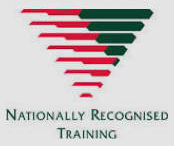Quick Links
What units of competency are included?
Where and how will my course be delivered?
Who will supervise my assessments?
Will I be accepted into this course?
What do I need to supply for my course?
Is this the right course for me?
What if I can’t ride any more?
What further study or work opportunities are available on completion of my course?
What Students Say
Become a Professional
Horse Riding Instructor
Enrol in the SIS30713 Certificate III in Sports Coaching
with Equestrian Electives
NOW . . . while the price is still within reach!
You have arrived on this page at the right time to save $800.00!
We have just moved the Horse Riding Instructor course over to our new portal and are giving a substantial discount to the first few students who would like to Beta Test this new portal!
Don’t worry, this is still an accredited course with the same high quality of instruction you would expect from a Government Accredited Registered Training Organisation.
Everything has already been tested internally, so we don’t expect that there will be any hiccups. However, if there were then it is only a matter of advising our Student Support Officer and they will be fixed.
The Beta testing is just so you give us some feedback on how you find the new portal and to see if you have any suggested improvements.
Once you have decided to become one of our beta Testers, please keep reading to find out the details of how to become a professional Horse Riding Instructor and take advantage of the opportunity to enrol while the cost is still within reach . . .
Online Horse College is able to deliver this equine instructor course online, and to support you to complete your practical requirements in your own equestrian environment in your own time. During this testing phase, we will also offer you the option of attending our practical training camps to complete your practical activities
This course to become a horse riding coach gives you the flexibility to continue working, to ride and compete your own horses, study horses and keep your family commitments while working towards your professional accreditation as a horse riding instructor.
Keep reading for further details…
What will I learn?
Your ‘Horse Riding Instructor’ course outline includes horse care and teaching areas with optional riding. It is an ideal course for some-one who already has knowledge of horses but for a variety of reasons is unable to continue riding. This course focuses on teaching the beginner and novice rider the foundations of riding.
You should already be knowledgable with horses before you commence this course, either working in a professional capacity, extensive knowledge gained through owning your own horses or previous equine qualifications.
The subjects included in this course are listed below:
Identify, Handling, Facilities and Basic Travel
These first four areas of study with horses should confirm that you have enrolled in the correct course. You should be able to complete the requirements easily, but if you have difficulty please speak to us about changing your enrolment into another one of our online horse courses.
Grooming and Equipment, Riding Preparation, Aids and Gaits and Basic Riding
This is another area that you should find fairly straightforward and is introduced early in the course. If you find these first four areas difficult, we recommend that you discuss changing your course with us. It may be that you use a different pathway to become a horse riding coach. If there is a reason why you cannot complete the horse riding section of this course, it is possible to gain your ‘Horse Riding Instructor’ qualification without completing the horse riding section.
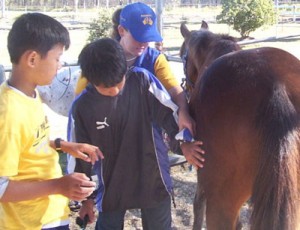 Stable Practices
Stable Practices
As we expect you to complete this course and go into a professional riding establishment, this subject is essential to set a professional standard. In your position as a riding instructor, you may be required to supervise others while they perform their stable duties such as feeding, cleaning stables and maintaining saddlery.
Horse Husbandry
In your horse riding coach course, we continue your role as the supervisor and confirm that you are able to recognize the correct horse husbandry practices in a stable of horses, as well as extras like tips on pulling manes and tails, trimming and preventing rubs so you present the horses you care for to look their best.
Illness and Injury
Hoof injuries, allergic reactions, wounds and other signs of ill- health are included in the area of illness and injury. Causes, symptoms and treatment are taught so when you are in charge of a large stable, you can help prevent many common illnesses and injuries that are so common in the horse industry.
Basic First Aid
You will learn what to do if a horse become ‘cast’ in his stable. You will also learn not only how to deal with that situation, and how to help prevent other life threatening ailments. We teach you what a well equipped first aid kit will contain, the application of first aid bandages and infectious diseases.
Work Routines
Determining work objectives prior to managing and monitoring the tasks of yourself and your staff are essential in a well run stable and you will learn about this in this unit. the factors which affect work, giving and receiving performance feedback and job roles are also taught.
Work Performance
How well you perform in the workplace will attribute to your efficiency as an employee. Being efficient means you will be able to complete tasks and routines quickly, but you will also need to be able to communicate and work well with other colleagues, clients and horses.
Assessing Horse Health
As a horse person working in the industry it important you become accustomed to continually assessing the health and well being of horses. We teach you techniques for developing an ‘eye’ to quickly make decisions for what a healthy horse looks like and what tasks they are able to perform.
Horse First Aid
We teach you about the two types of first aid for horses 1) treating an injury which doesn’t require medical attention (e.g. minor cuts, scrapes and scratches) and 2) providing temporary measures (e.g. minimising blood loss) until the vet arrives. Also how to maintain your horse first aid kit, keeping it well stocked and in a convenient location.
Basic Reproduction
While we won’t be specializing in preparing you to manage a large stud, this area introduces you to the reproductive system, dealing with parts of the female and male systems, gestation and signs of foaling so you have a basic knowledge of the breeding of horses.
Physiology 1
This first physiology area takes a general look at the functions and essential components of the nervous, musculo-skeletal and endocrine systems. We divide these systems into the parts, with further explanations of each part.
Physiology 2
This second physiology area introduces the concept of the body systems of the horse and focuses on the respiratory, circulatory and digestive systems of the horse. The parts and functions of these body systems are taught with many color diagrams and clear, well worded explanations to assist the learner in this area.
Conformation
You will learn about the general desirability’s of any breed or type, and the reasons they may be undesirable. We look at the standards and desirability’s between different breeds, and how a horse with unsuitable confirmation for one riding discipline may excel at another type of riding.
NOTE: A non-riding option is now available for your riding instructor qualifications. The subjects listed below are for recommended for competitive dressage and jumping riders. But if you prefer a less classical approach to your horse riding units then please talk to us about your options.
Your Horse Riding* areas are:
Upright Seat
As you will be teaching your students on how to sit in the saddle and hold the reins, it is essential that you are able to demonstrate an independent, balanced and effective way of riding. You learn about maintaining this position during transitions within and between the paces in walk, trot and canter.
Using Aids
You learn about the natural and artificial aids, including the types of forward aids, lateral (sideways) aids and regulating aids. We give you tips on how to develop your ‘feel’ and riding ‘half-halts’ so you can ride different types of horses and train them individually, according to their ability to progress.
Track and Figures
In this area we teach you the two different sizes of arenas, letters and dimensions as well as tips for learning them. Tips for correctly riding the correct sizes and shapes of common tracks and figures in the dressage arenas are given as well as the reasons for riding them.
Training Scale
We introduce you to a program of physical education or gymnastic process to develop your horse’s natural physical and mental aptitudes thus producing a horse which is a pleasure to ride. You will learn why it is important to develop the horses natural rhythm and then how to encourage their suppleness/ looseness as they get ready for the next step.
Contact
You will learn how to obtain contact, what is a good contact and ways horses avoid the contact as well as common faults. We teach you how to make sure your horse is loose and supple and can be ridden forward into the contact, so there is less resistance, irregularity or tension.
Training
No matter what discipline or recreation you choose to pursue with your horse it will probably require some sort of training. Even the weekend trail riding horse can benefit from some basic flatwork or dressage training to assist in the communication between horse and rider.
Terminology
There are many terms you will hear being used within horse riding and there are just as many ways to describe what is going on with the horse and rider. The meaning of some can be quite quizzical while others can be more obvious. We give you simple easily understood explanations of this terminology.
*Horse Riding is an extra elective in this course and will incur an additional cost. The horse riding theory component has no additional cost
The main part of learning how to become a horse riding instructor is the coaching. Our Equestrian Teaching areas are:
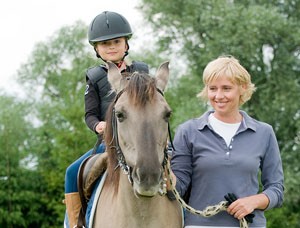 Coach Practices
Coach Practices
This area supports your ‘Beginner Coaching’ course, but specializes in the area of teaching and coaching horse riding including teaching children. This is an essential part of becoming a horse riding coach/instructor and is included in all of our horse riding instructor courses. As a riding instructor/ equestrian coach, you may be required to be a motivator, planner and advisor to your students and in this area you will learn how to combine these roles in accordance with your ‘Code of Conduct’.
Coaching Special Groups
Riders may do so for many different reasons, because they want to improve fitness, develop new skill or for social contacts and riders with special needs are no different. As part of your riding instructor qualification, we teach you how to accept each participant as an individual and how to be an effective horse riding coach and adjust to accommodate for individuals (including kids), especially those with special needs.
Provide First Aid
The co-requisite St John’s First Aid course (or equivalent) is a co-requisite for this course and should be taken prior to this part of your course.
The horse industry will never be completely free from risk or hazards, as learn about how to become a horse riding instructor you will learn that it is possible to avoid or minimize these where ever possible. In your riding instructor qualifications course we teach you how to look at the potential risks around a horse environment and how to consider the level of risk for each potential hazard.
First Aid
We ask you to consider the basic aspects of dealing with a first aid scenario in the horse environment and how to teach horse riding lessons in a difficult situation. You will learn that as a riding instructor/ equestrian coach it will be part of your role to make decisions and prioritize actions in an event of an injured rider/ person in your control.
Supervise Horse Handling
You will learn what how to continually assess your student, consider their stage of learning and the type of supervision and training they require to minimize your legal liability. We teach you how to provide assistance and when to seek assistance, as well as the planning and preparation prior to teaching. how to teach kids to ride horses
Safe Riding
Safety is always an important element when you are riding, but especially important when you have the responsibility for others. When you are learning how to teach kids to ride horses, their parents want to be reassured that you are keeping their children safe. Any horse riding coach course should have safety underpinning all the training and assessment throughout the course. Maintaining safe practices when you ride and teach will minimize hazards and risks to yourself and others. Arena Rules may vary between different equine establishments, but it is important you understand the reasons they were created before you make any changes.
Risk With Horses
You will be given a scenario which may easily happen in an equine environment. You will be required to take control of the situation to eliminate hazards, control the risks and minimize the risk of further problems. You will learn the appropriate regulations and guidelines and the impact of risks.
Risk Analysis
As you progress through your career in the horse industry and increase the level of your horse riding instructor certification, you will usually be required to accept a higher degree of responsibility for risks and to contribute to ‘Risk Treatment Plans’. We teach you how to implement and improve the risk management within an equine environment, what are acceptable risks and how to define between internal and external sources of risk.
Lunging the Horse
Prior to lunging a rider on a horse and as part of the horse riding instructor training it is essential that you can lunge a horse safely and efficiently. You will learn how to recognize a safe lunging area, the required equipment for lunging, using a lunge rein, lunging the horse to prepare for the rider, especially when you are teaching young children. In this equine instructor course we teach you about the considerations for lunging and also considerations for teaching a rider on the lunge.
Mounting and Dismounting
While this exercise is a simple process to the experienced horse person teaching horse back riding lessons, it can be extremely difficult for the beginner rider, both physically and psychologically. It will be part of your role and responsibility as a riding instructor to ensure the safety of the horse, rider and you. When you teach horseback riding you will need a checklist with points to remember throughout this process and this is included in your riding instructor.
Lunging Exercises
While there are no specific ‘guaranteed’ exercises that will solve every problem, we teach you horse riding games (which are great when you are learning how to teach kids how to ride horses), activities and exercises that you can vary to suit every type of rider. So it won’t matter if you are teaching horse riding lessons to some one who is very confident or extremely nervous, you will have a wide range of progressive exercises to help your students in their horse riding lessons.
Teaching Walk
A nervous adult beginner will want to focus a lot more on walk before progressing onto trot than a more confident younger rider. As part of your horse riding instructor certification we teach you techniques to hold their interest and also some tricks for teaching the theory of the walk to younger, more active and more confident riders. If you know how to teach horseback riding lessons to beginners correctly to build confidence, you could become a very popular qualified horse riding instructor is a short period of time.
Teaching Trot
Most riders can learn to rise to the trot within minutes of sitting on a horse for the first time if they are taught the correct techniques. We show you how to teach the trot without riders’ balancing on the horse’s reins or giving their horse a sore back. You will learn how to teach horse riding with exercises to change easily between sitting trot to rising trot as well as jumping position in the trot.
Student Assessment
As you learn more about becoming a riding instructor, you will learn there are many non-verbal signs a rider will show an experienced equestrian coach that they are not ready to progress onto the next exercise. We give you a checklist of signs to check before you take you rider away from their comfort zone of you controlling their horse onto them riding and controlling their horse by themselves. As you know how to become a horse riding instructor, you will recognize the safety implications if this happens too soon.
Turning and Guiding
Sometimes beginner riders treat their horse like an insensitive vehicle, pulling on the reins for turning and stopping using strength instead of feeling and upsetting their horse in the process. Part of knowing how to teach horseback riding lessons, is having some simple exercises to teach the rider to turn and guide their horse using sensitivity and feeling and in your horse riding instructor course you will learn these exercises.
Trot Diagonals
As your students become more established in the rising trot and are able to maintain they rhythm of the trot, they are able to learn about riding on the correct diagonal. We teach you about the common problems riders have in recognizing the correct diagonal, and as part of your horse riding instructors qualifications we give you some easy tips to teach both correct diagonals and changing diagonals.
Circle Exercises
Riding a circle can be difficult for a beginner, but it is a reflection on the way a rider can control them in an open area. If the rider allows them to speed up on a circle, they may allow them to canter or even gallop in an open area. Similarly if they drift in and out, slow down or ignore the rider this is a larger problem in an open area. In your equine instructor course we teach you the signs that a rider is not really in control and how to fix them while they are still in a safe environment.
Corners and Half Arena
We teach you some more exercises to teach a beginner horse rider in a safe way during your horse riding instructor training. If they are always in control, they gain confidence and progress more quickly. This is another area where we give you tips for teaching horse riding exercises to the beginner and include transitions with a focus on maintaining control and building confidence while teaching the beginner horse rider.
Full Arena
As you move your rider onto a larger area, their horse is more likely to gather pace with the likelihood of the rider losing control and confidence. In this part of learning how to become a horse riding instructor we teach you how to recognize the behavior of horses and how they are affected by working in a larger area. In this part of your horse riding instructor certification you will learn how to bring them under control in a safe efficient way, without the rider losing confidence.
Summative Assessment
In this part of the horse riding instructor qualification course, we give you a topic to teach that may include a combination of the above areas. You will have a limited time to prepare and teach this lesson as you would if you were working as a professional, employed by a private rider or in a riding school, equestrian centre, pony club or other professional environment.
What units of competency are included?
In your Horse Riding Instructor course (SIS30713 Certificate III in Sport Coaching), the following units of competency are included:
Core (9)
- HLTAID003 Provide first aid
(This is a co-requisite and should be completed by an external provider either prior to or at the same time as the Horse Riding Instructor course) - SISSSCO101 Develop and update knowledge of coaching practices
- SISSSCO202 Coach beginner or novice participants to develop fundamental motor skills
- SISSSCO303 Plan and deliver coaching programs
- SISSSCO304 Customize coaching for athletes with specific needs
- SISSSDE201 Communicate effectively with others in a sport environment
- SISXFAC207 Maintain sport, fitness and recreation equipment for activities
- SISXRSK301A Undertake risk analysis of activities
- SITXCOM401 Manage conflict
Equestrian Electives (5)
- AHCHBR201A Monitor horse health and welfare
- AHCHBR203A Provide daily care for horses
- RGRPSH401A Relate anatomical and physiological features to the care and treatment of horses
- SISOEQO304A Apply first aid for horses
- SISSEQS303A Teach the fundamental skills of riding
Extra Electives (1)
- BSBITU203A Communicate electronically
There is some flexibility within these units. If you would like to complete different units within your Horse Riding Instructor course then please talk to us.
We may have your required units within another one of our courses, and can easily offer you a change of units within your course.
If you do not have extensive previous experience with horses or are under 18 years of age, you will be required to complete a pre-requisite course at Certificate II level which includes workplace health and safety, horse handling and safety, horse care, horse health and communication within the horse industry.
Your co-requisites which can be completed either prior to commencing your course or prior to commencing the coaching component of your course. They are;
a) St Johns First Aid (or equivalent) which should be completed by an external provider. There is some more information about this course on this link http://stjohn.org.au/first-aid-training or contact your local St Johns.
b) Australian Sports Commission Online Community Coaching course. Please visit this page to enrol (no charge) https://learning.ausport.gov.au/auth/login/?returnUrl=%2F
On successful completion of the ‘Horse Riding Instructor’ course, you will receive the ‘SIS30713 Certificate III in Sport Coaching’ (with Equestrian Electives) qualification.
We want you to be qualified in the latest, most up to date courses. If the Training Package changes while you are enrolled we will do our best to change your course into the new Training Package as early as possible. Also, we monitor the latest demands of the horse industry and we continually update our courses to meet these demands and to give you the best course possible.
How long will my course take?
This course for your riding instructor qualifications has been designed for full time study, over 60 weeks (72 weeks including holidays), with 200 hours recommended teaching experience to be gained during the course. However, it could take less time if you already have previous experience with horses or plan to study for more than 23 hours per week plan to study full time.
If you already have previous experience and would like to study full time, this course about becoming a professional horse-riding instructor could take much less. Simply let us know if you would like to ‘fast track’ your course!
Of course you may study part time if you like and your enrolment will be valid for up to three years. If you would like to re-enrol for a further two years, simply contact us for your updated enrolment details.
What part of the course is delivered online?
All lessons are delivered online through your secure web page with a range of resources such as
- Workbooks
- Extension Lessons/Homework
- Video Tutorials
- Power Point Presentations
- 24 x 7 Email Support access
- You will have access to the Online Horse College team through phone, email and Skype
- And Much, Much More!
The theory component is assessed through Online Horse College and the practical component may be completed through a variety of methods as outlined below
This ‘Horse Riding Instructor’ course will be much more straightforward if you have easy access to an equestrian centre environment where you can regularly practice your skills
You will also be able to have regular phone tutorials during the course. In these you can ask us about any particular questions about your own horse, even if it has nothing to do with your course.
Although they will need to be confirmed with us, when you complete many of your online assessments, you will know the results immediately!
Are there any practical tasks within my course?
Of course! Horses are live animals and learning about horse behaviour, especially when they are ridden is an essential part of this course. To meet the practical coaching components of the course
A combination of practical skills and theoretical knowledge are the main requirements for this qualification and these skills will be developed throughout the course.
There are a few options to complete the practical requirements of this course, depending on your location, time available and other commitments.
There may be some components of your course that may be completed by RPL from prior qualifications, references or third party reports.
Our most popular option is for assessment of practical tasks to be done by video. There are instructions for the submission of video (usually through YouTube.com) within your course content.
If you need further experience with horses before submitting your video, this could be done in your local area or with contacts you already have within the horse industry. Please use our checklist to confirm the requirements of a suitable equestrian environment to gain further practical experience with horses http://www.onlinehorsecollege.com/equestrian-environment-checklist
If you already have a horse care teacher or equestrian coach, they may be already qualified to supervise and/ or assess your practical assessments or even give us a ‘Third Party Report’. (There is an application process for assessors that must be completed prior to your assessment).
Other people who may be qualified to supervise and/ or assess could be your riding instructor, the owner/manager of your stable, or someone-one else you know who has considerable experience with horses. The cost for the practical assessments is paid directly to the assessor.
If you prefer to study the practical components of your course in an ‘on campus’ mode, we hold five day practical workshops about four times during the year at Caboolture (Qld, Australia). There is a discounted charge if you pay for your workshop with your enrolment. It may also be possible to organise workshops at your centre, although there will probably be an additional charge for this.
You may also be required to ‘self’ assess and ‘peer’ assess your practical activities with horses. A ‘peer’ may be some-one with around the same experience as you with horses. They act as a ‘mirror’ and mark off your checklist as you complete your activities.
We may also conduct some verbal assessments during a phone call or phone tutorial. Some of the practical assessments may be simulated when it is impractical to assess in a realistic setting.
Will I be accepted into this course?
To be accepted into this course, you should be
- fit and healthy enough to meet the practical requirements of this course
- at least fifteen (16) years of age to commence this course
- completed equivalent to Year 10 (Queensland Education)
- or equivalent to eleven years full-time study in the English language
- or equivalent to twelve years full-time study in another language
- with excellent reading, writing, speaking and listening English language skills
- with previous qualifications or extensive experience with horses
Alternatively you may have sufficient life experience (at least 18 years) in lieu of the educational qualifications.
This course is delivered and assessed in English, so if English is not your first language you should be able to read, write, listen and speak the English language in an excellent manner prior to enrolment so you can maximise your learning.
If you believe you have equivalent pre-requisites to enter this course, or a very good reason why you cannot meet these pre-requisites, please contact us to discuss these things.
What do I need to supply for this course?
For you to study this course, you will need to supply
- A computer with Internet access
- Microsoft Office suite (preferable but not essential)
- Printer
- Scanner (preferable but not essential)
- Skype software (free) for phone tutorials
- Other free software as advised during the course
- An equestrian environment for practical training and assessments, ideally in a commercial setting (see our checklist)
- A suitable horse for your practical activities
- A supervisor who has experience with horses and in particular in the section you are studying. As horse activities are of a high risk nature, it is essential that when you are attempting unfamiliar activities you
- have completed the theory components prior to attempting the practical components
- are under the supervision of an experienced horse person who can perform the task competently. This supervisor should have performed the task many times, is able to advise you on the risks and show you how to minimise the risks. They should continue to supervise you until you are competent.
Is this the right course for me?
Would you like to have a career with horses?
Do you love helping people?
Would you like to teach people about horses and riding?
Do you plan to have a career with horses and would like a professional qualification?
Are you a business owner and would like your staff to become qualified horse riding instructors some so you can obtain better priced insurance?
Would you just like to know that you are riding and training your horse correctly?
If you have said ‘yes’ to any of the above questions, then YES… this is the right course for you!
What if I can’t ride any more?
Great news! Riding is not compulsory for this course, so you won’t need to ride to become a qualified horse riding instructor. You can complete the riding theory in preparation for your teaching components and then (only if you choose) you can complete the riding at a later date.
Will this course be recognised in my country?
Our distance learning equine studies all work within the Australian Training Qualifications Framework (AQTF). We provide a Pathway from High School through our Certificate and Diploma courses that give recognised credit into University courses. These distance learning equine courses are registered in Australia, but because they are taught by distance education, students can access them around the world and still receive their educational qualifications. Most countries recognise qualifications delivered and accredited by Registered Training Organisations in Australia. They are often held in higher regard to qualifications issued in their own country!
If your country has equestrian and equine qualifications, they may be able to grant RPL (Recognition of Prior Learning) into their qualifications from your studies at Online Horse College.
What further study or work opportunities are available on completion of my course?
When you have completed the ‘Horse Riding Instructor course, you can enrol in our ‘Specialised Horseriding Instructor’ or ‘Own Horse Business’ courses.
The ‘Horse Riding Instructor’ qualification is recognized as a professional horse riding instructor qualification and is suitable to gain insurance for teaching horse riding. Some of this course can also be credited towards both ‘Specialised Horseriding Instructor’ and ‘Own Horse Business’ courses.
Why should I study at Online Horse College?
Hundreds of happy students before you would like to take advantage of this fantastic opportunity of studying with Online Horse College. Here are the top five reasons why students like to study with us
- flexible online courses
- equine career pathway
- approachable, friendly staff
- affordable payment options
- internationally recognised courses
We keep abreast with the latest developments within the equine industry and as Training Packages and courses are revised, we will re-enrol you in the updated course before the teach-out period at no additional cost to you.
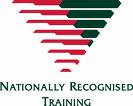 |
All of our online equine courses are from fully accredited qualifications and we are Nationally Recognised to deliver this training. See details of our last audit here. These home study horse courses have been adapted to the needs of the international Equestrian Industry. We are accredited to deliver SIS30713 Certificate III in Sports Coaching (with Equestrian Electives) |
 |
We are a member of the Australian Council for Private Education and Training (ACPET). Acpet is the National Industry Association for independent providers of Vocational Education. They have strict controls in place to guarantee that students are treated fairly and in accordance with their guidelines |
 |
You may be eligible to be paid for up to two years for an individual course, but only if you are an Australian citizen and meet the Centrelink guidelines. Your local Centrelink office will be able to let you know if you meet their criteria for our equine home learning. Most people do, but if you already have a sizable income then don’t expect to qualify!Provider Institution Ref No: 4P530 |
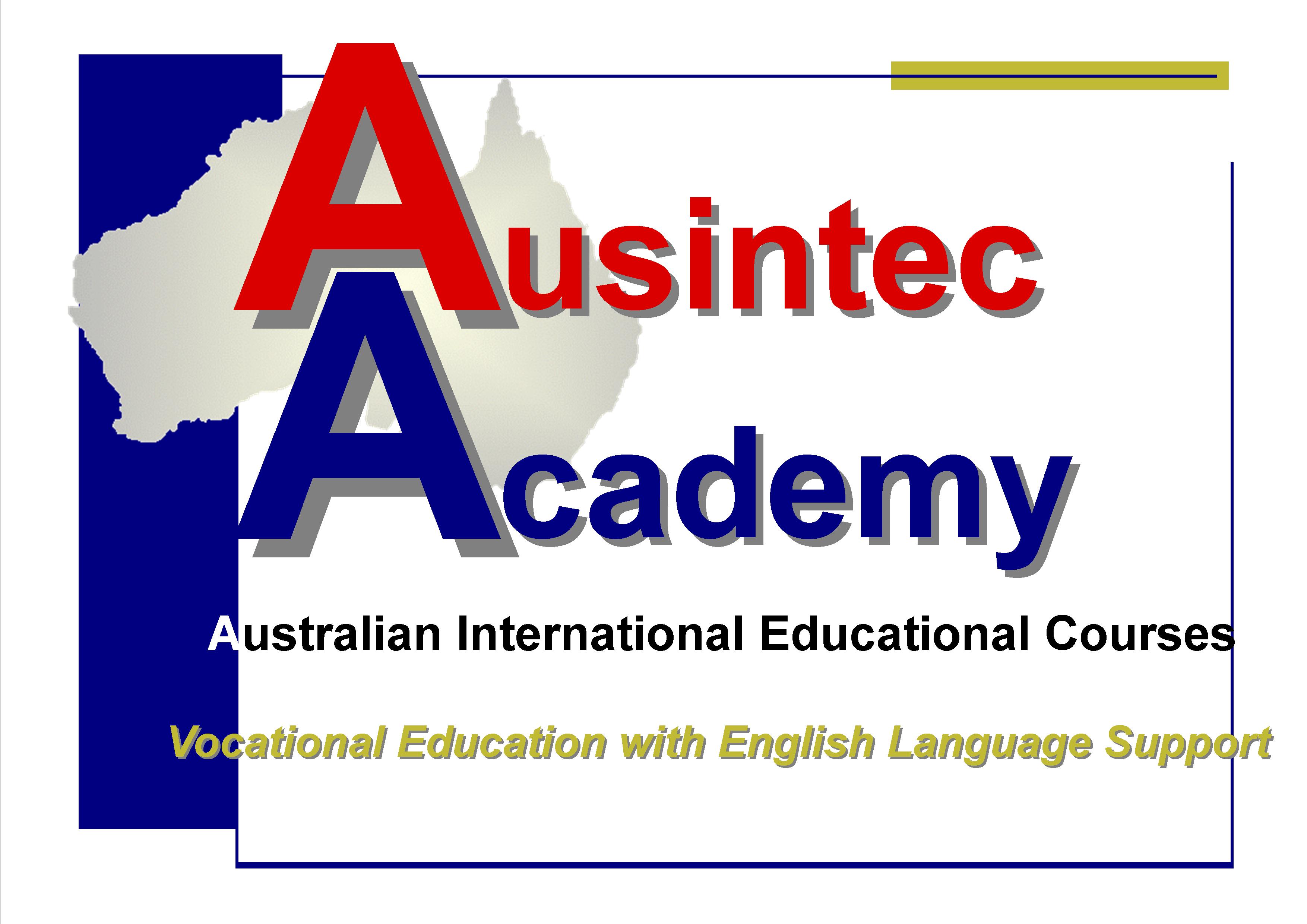 |
OnlineHorseCollege.com (Ausintec Academy – previously Ausintec/Caboolture Equestrian Centre) has been a Registered Training Organisation since 2001 delivering courses to meet the needs of the International Equestrian Industry during that time. Until recently Ausintec Academy has delivered all training ‘on campus’ but has developed online courses to meet the needs of the growing International equine community.Registered Training Organisation No: 31352 |
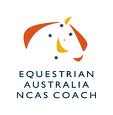 |
As a Registered Training Organisation, we cannot give you credit into the EA (Equestrian Australia – previously Equestrian Federation of Australia qualifications for the study you compete with us.However our Director (Glenys Cox) is a qualified Coach Educator and Examiner for EA and is able to offer credit into the EA qualifications from your studies at Online Horse College. Please contact her at Glenys(at)OnlineHorseCollege.com for further details |
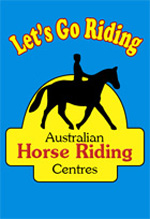 |
Depending on your State requirements, the ‘Horse Riding Instructor’/ ‘Trail Ride Leader’/ ‘Certificate III in Sport (Coaching)’ with Equestrian Electives may be the complete qualification required for you to be employed immediately as a horse riding instructor or a trail ride leader in an Australian Horse Riding Centre. If you require further assessments, or credit from one of our other courses our Director (Glenys Cox) is a qualified Coach Educator and Examiner and is able to complete your individual State requirements. Please contact her at Glenys(at)OnlineHorseCollege.com |
If you cannot see the discount voucher code advertised on this page or have any further questions then please leave your details here so we can contact you
Option 1: Enrol in the ‘Horse Riding Instructor’ Online Course NOW!
What You Receive With This Enrolment
* Complete online course
* Student support throughout your course
* Video assessments for practical tasks
I have read and understood all the information on this page..
I want to use this discount code, please enrol me immediately!

Option 2: Enrol in the ‘Horse Riding Instructor’ Online & Offline Course NOW!
What You Receive With This Enrolment
* Complete online course
* Student support throughout your course
* Video assessments for practical tasks
* One x five day live-in practical workshop (or five individual practical workshop days)
* Opportunity for practical task assessment within workshop
* Opportunity to purchase further five day workshops @ $200. on enrolment (normal price $500.)
I have read and understood all the information on this page.
I want to use this discount code, please enrol me immediately!

As you are undertaking an Australian qualification on the National Training Framework, you must provide the following identification
If you are in Australia:
- Proof of Citizenship (Either Birth Certificate, Medicare Card or Passport for any Country)
- Proof of Residency (Drivers Licence / 18+ Card / Bank Statement / Centrelink Card / Utility Bill / AEC Letter displaying your current residential address)
- USI (Unique Student Identifier), details found on this link www.OnlineHorseCollege.com
- Proof of Prior Education or Certificates
If you are overseas:
- Proof of Citizenship
(If you are able to provide Birth Certificate or Passport then please contact us) - Proof of ID (a form of photo identification preferably)
- Proof of Prior Education or Certificates
Funded students will require additional identification as stated on your Enrolment Form
Please call us on (07) 3102 5498 if you would like to find out more and to discuss your course options.
